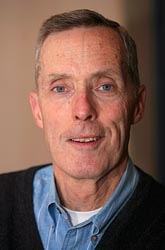That funny little man with the bad haircut peering through binoculars from a bunker into the distance, a staple on every evening television news the week before, was suddenly gone.
Kim Jong Un, the dictator of North Korea, had been a constant in the news for promising a nuclear attack. There is no reason to fear, authorities said, North Korea does not have a delivery system capable of reaching the United States. (This recalls the observation made by comedian Mort Sahl concerning the then-feared China: “They have an atomic bomb, but we’re told not to worry, they have no delivery system. But with 650 million people, they can line up and pass it hand by hand.”)
North Korea and almost everything else was suddenly gone from television and replaced by continuous coverage of the attacks at the Boston Marathon.
Later in the week, there was the explosion of a fertilizer plant in Texas, killing 15 and injuring about 200. No doubt when it was built to combine highly explosive material, the community was told not to fear, that there were safety regulations and inspections in place.
The last Occupational Safety and Health Administration inspection of the plant was in 1985. By the end of the week, attention turned to the Mississippi River. Again, there had been assurances that the dikes would hold. We saw in mid-April fear and evil. Answers were sought.
“Most of our institutions that we use to stabilize ourselves and our country are damaged, crippled,” said Stuart Fischoff, a professor of media psychology at California State University Los Angeles, in an interview with The Associated Press. “What you’re having is a kind of an emotional, cognitive anarchy.”
If there is no anchor in society, could that be due to organized religion having less and less adherents? Does evil exist? Yes.
“I think it is fair to say that this entire week we’ve been on a pretty direct confrontation with evil,” said U.S. Secretary of State John Kerry.
Is evil recognized? Not always.
Too often, evil, as presented by the devil, the spirit of evil, is scoffed at as no more than a cartoon figure of Satan with pitchfork and tail. Government assurances are not sufficient to cast out fear. Love has no room for fear, St. John says in his epistle. Perfect love casts out all fear.
The love John speaks of is the same kind that builds and continues to nourish communities.
There is a coming together. People act selflessly, but then it declines until the next disaster.
“Our challenge is to keep this spirit of community alive going forward. As people of faith, we must commit ourselves to the task of community building,” Boston Cardinal Sean P. O’Malley said in a homily on the Sunday at the end of the week.
“As believers, one of our tasks is to build community, to value people more than money or things, to recognize in each person a child of God made in the image and likeness of our Creator.”
One child of God was 8-year-old Martin Richard, who was killed in the bombings. He became a posthumous prophet by virtue of a photo with a sign that said: “No more hurting people. Peace.”
The thought was written on a poster drawn by Martin in a class. There was no telling when it was done. Was it after Newtown, after Aurora?
A prophet is one who communicates God’s will and calls his people back. Martin’s message is not new. Of all that was said and eulogized during the week of fear and evil, his was the most pithy, poignant and prophetic.
Let’s take it to heart this time.
—
Kent is the retired editor of archdiocesan newspapers in Omaha and Seattle. Contact him at: considersk@gmail.com.
PREVIOUS: Bishop McFadden: Tireless advocate in the public square
NEXT: The pope’s example about living in solidarity with the poor




Share this story